
Macedon, Koinon of Macedon
Pseudo autonomous issue
Time of Gordian III (239-244 CE)
Æ 26,6 mm 10,50g
ΑΛΕΞΑΝΔΡΟΥ; bust of Alexander the Great, right, wearing lion skin, seem from rear
Reverse: ΚΟΙΝΟΝ ΜΑΚΕΔΟΝΩΝ Β ΝΕΩΚΟΡΩΝ; Alexander the Great riding Bucephalus galloping right, holding couched spear; below, star
AMNG — RPC VII.2. 266
The above example, with Β ΝΕΩΚΟΡΩΝ, indicates it was minted after Severus Alexander restored the second neokoros, which were status symbols for cities and granted/revoked by the emperor himself. Severus Alexander likely did this for an impending campaign against the Sassanians.
The star is included on a number of Koinon issues, but I have yet to ascertain its meaning.
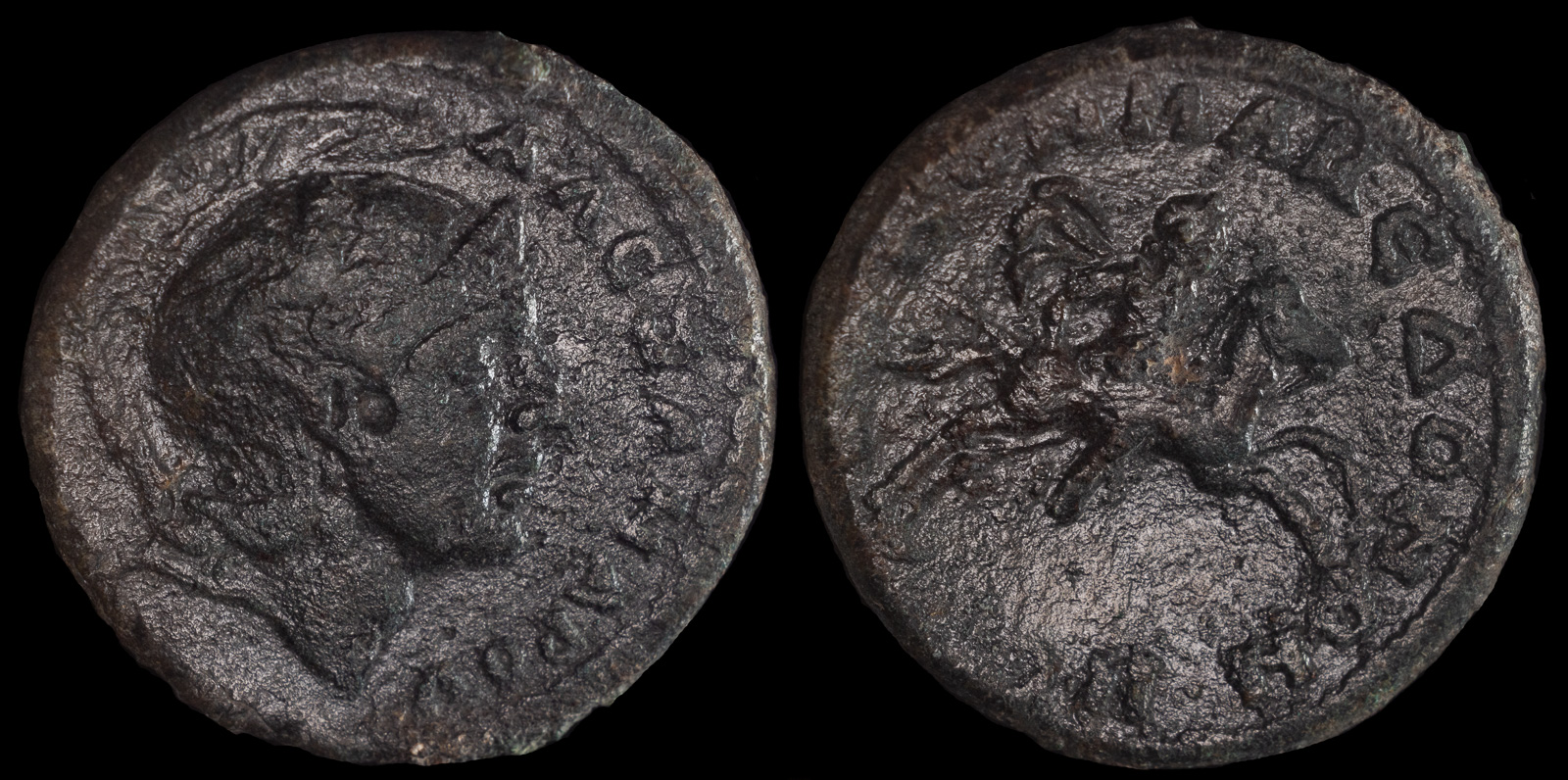
Macedon, Koinon of Macedon
Pseudo autonomous issue
Time of Alexander Severus (222-235 CE)
Æ 25mm 12,00g
ΑΛΕΞΑΝΔΡΟΥ; helmeted head of Alexander the Great, right; griffin on helmet.
Reverse: ΚΟΙΝΟΝ ΜΑΚΕΔΟΝΩΝ ΝΕΩ(Κ); Alexander the Great riding Bucephalus galloping right, his mantle floating behind him, holding couched spear
AMNG 445
The presence of ΝΕΩ without the B (two) indicates that this was minted during the reign of Severus Alexander, who stripped Beroea of one neokoros, likely because it was bestowed by his predecessor Elagabalus, who was now damnatio memoriae. He later restored it, perhaps in 231 CE. Thus, this coin likely was minted between 222-231 CE.
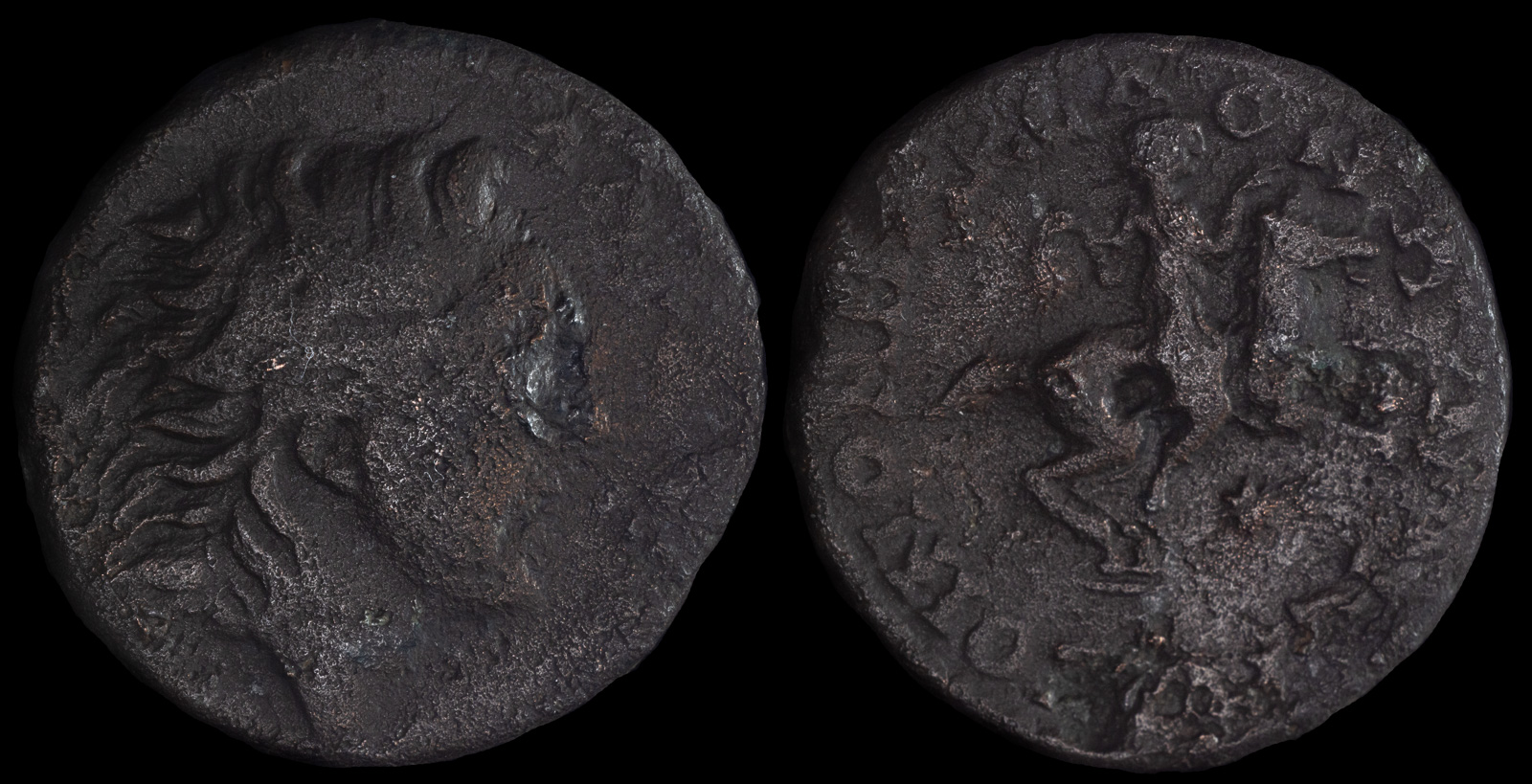
Macedon, Koinon of Macedon
Pseudo-autonomous issue 220-244 CE
Æ 24mm, 9,68g
Beroea mint. Diademed head of Alexander the Great right, with flowing hair /
Alexander the Great riding Bucephalus galloping right, his mantle flowing behind him, raising right hand; star below.
RPC VII.2 Online 156.23; AMNG –
The above seems to be an example of one of the two above, but with a different obverse and a star below Bucephalus. However, I’m not able to tell whether it reads ΝΕΩ or B ΝΕΩ, which would provide a better idea of the date. Although it’s probably a coincidence, I find it intriguing that the damage was done on this specific text, while the rest is legible. Could this have been scratched out when a neokoros was added or removed? Probably not, but the idea is tempting.
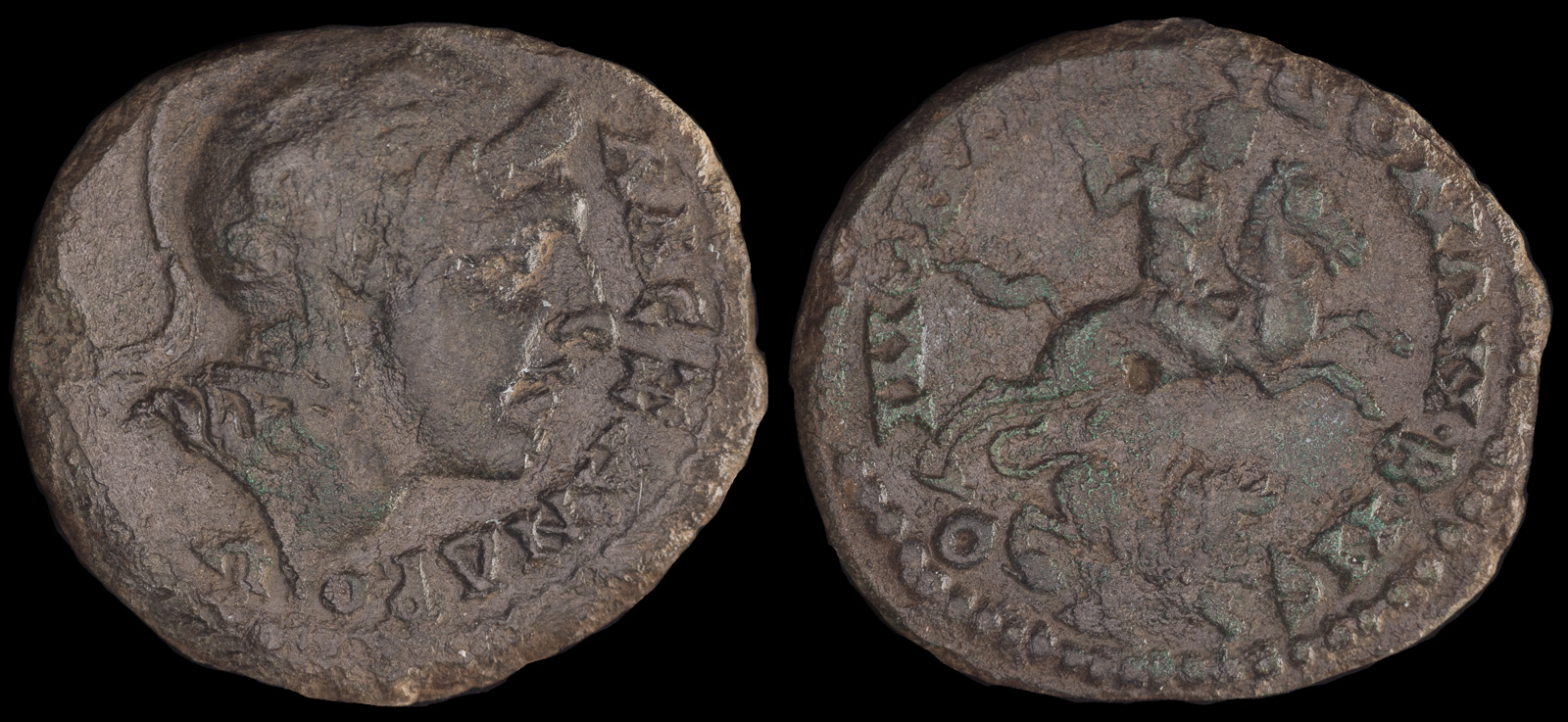
Macedon, Koinon of Macedon
Pseudo-autonomous issue, reign of Gordian III(?), 238-244 CE
Æ 7.84g, 26mm, 6h
AΛEANΔPOC, helmeted head of Alexander III ‘the Great’ to right /
ΚΟΙΝΟΝ ΜΑΚЄΔΟΝΩΝ Β ΝЄ, Alexander riding Bukephalos to right, hurling spear; below, lion advancing to right
RPC -, but cf. VII.2 Online Unassigned ID 66441 (serpent below Bukephalos)
Here we have the nice addition of a lion under Bucephalus. The text Β ΝЄ indicates this was minted after Severus Alexander restored the second neokoros, so roughly after 231 CE. The addition of the lion required the engraver to artistically separate the text.
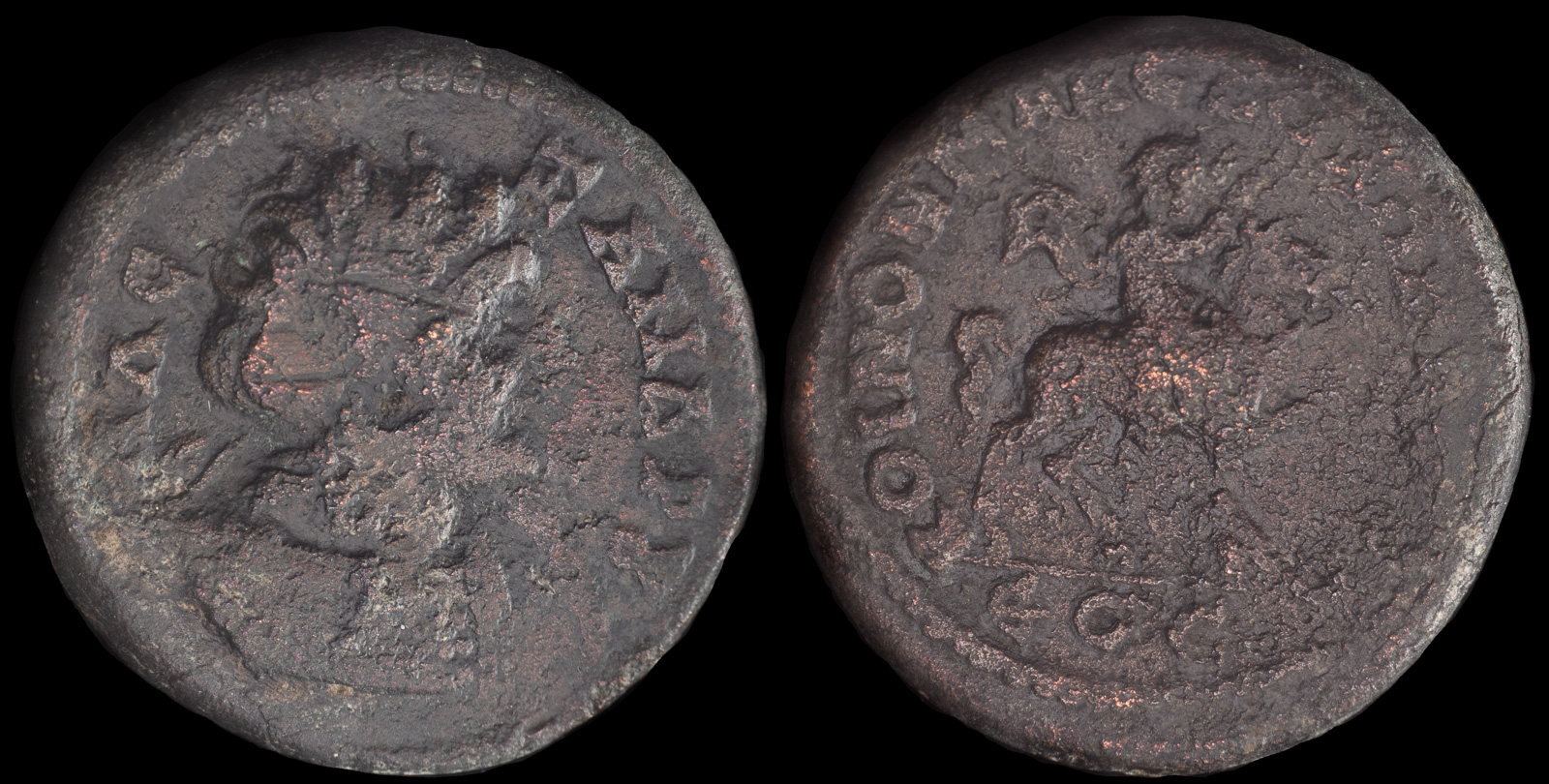
Macedon, Koinon of Macedon. Pseudo autonomous issue
Time of Philip I 244-249 CE
Æ 26mm, 15,90g
Diademed and cuirassed bust of Alexander the Great with hanging hair, right, seen from front, shield on left shoulder.
R/ Alexander the Great riding Bucephalus advancing right, raising hand.
AMNG 838; RPC VIII online (unassigned; ID 70268)
The above rare example, which reads on the reverse ΚΟΙΝΟΝ ΜΑΚΕΔΟΝΩΝ Β ΝΕΩ, ΕΟϹ, is one of the few Koinon of Macedon coins that is dated. The text ΕΟϹ indicates this was minted in 275 of the Action era, or 244/3 CE. That was a common year for Koinon of Macedon coinage to be dated, and likely aligns with a visit by the emperor Philip I for the Alexandreian Games, held yearly in honor of Alexander the Great.
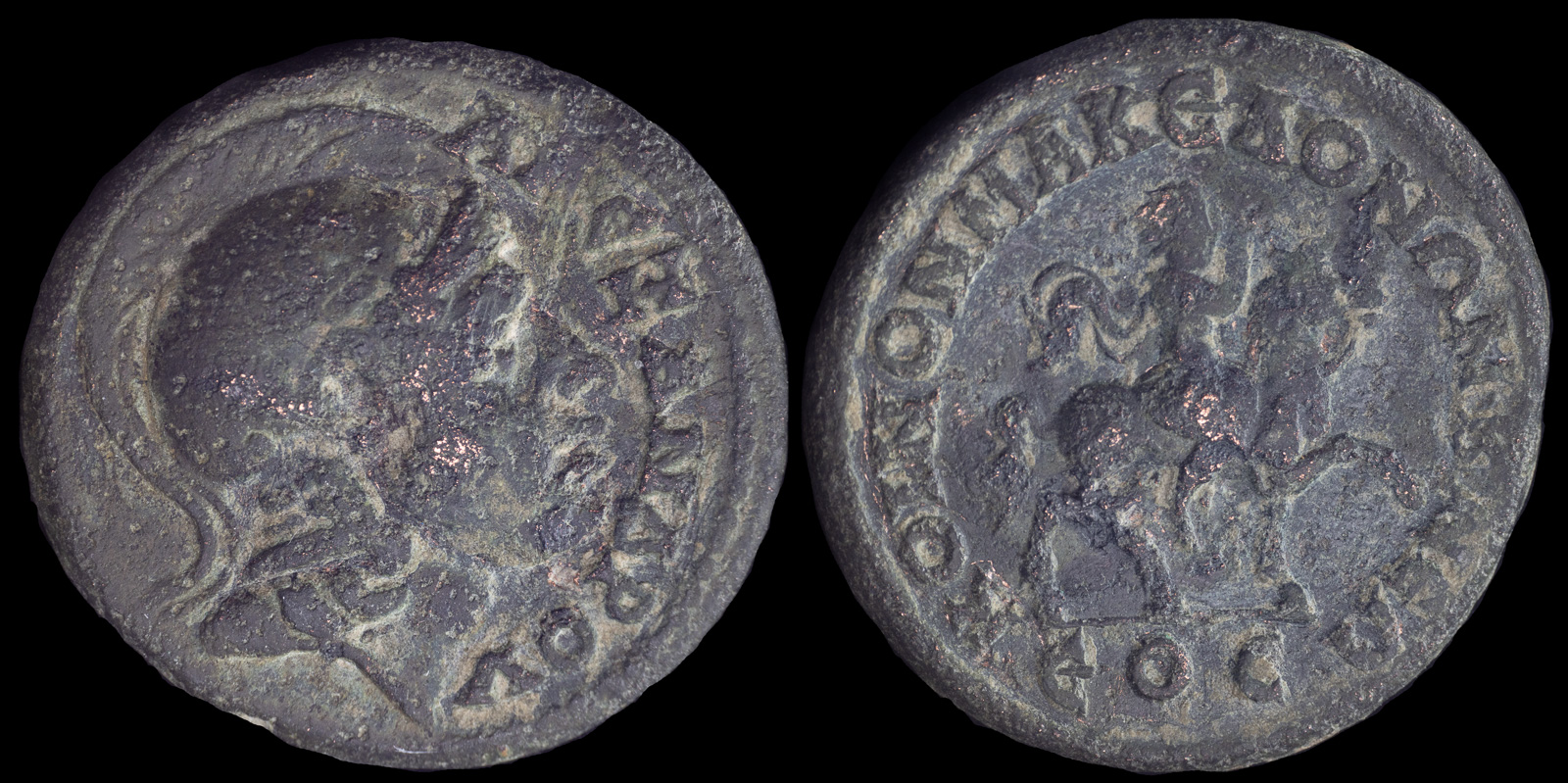
Macedon, Koinon. Pseudo-autonomous
Time of Philip I 244-249 CE
Æ 26,3mm 11,40g
Obv: AΛЄΞΑΝΔΡΟV. Helmeted head of Alexander III right.
R/ Alexander on horse trotting right.
Cf. AMNG III 851; RPC VIII online (unassigned; ID 70261)
The above has the same theme as its predecessor, only with a different obverse. It too was minted for the Alexandreian Games in 244/3 CE and also mentions the second neokoros.
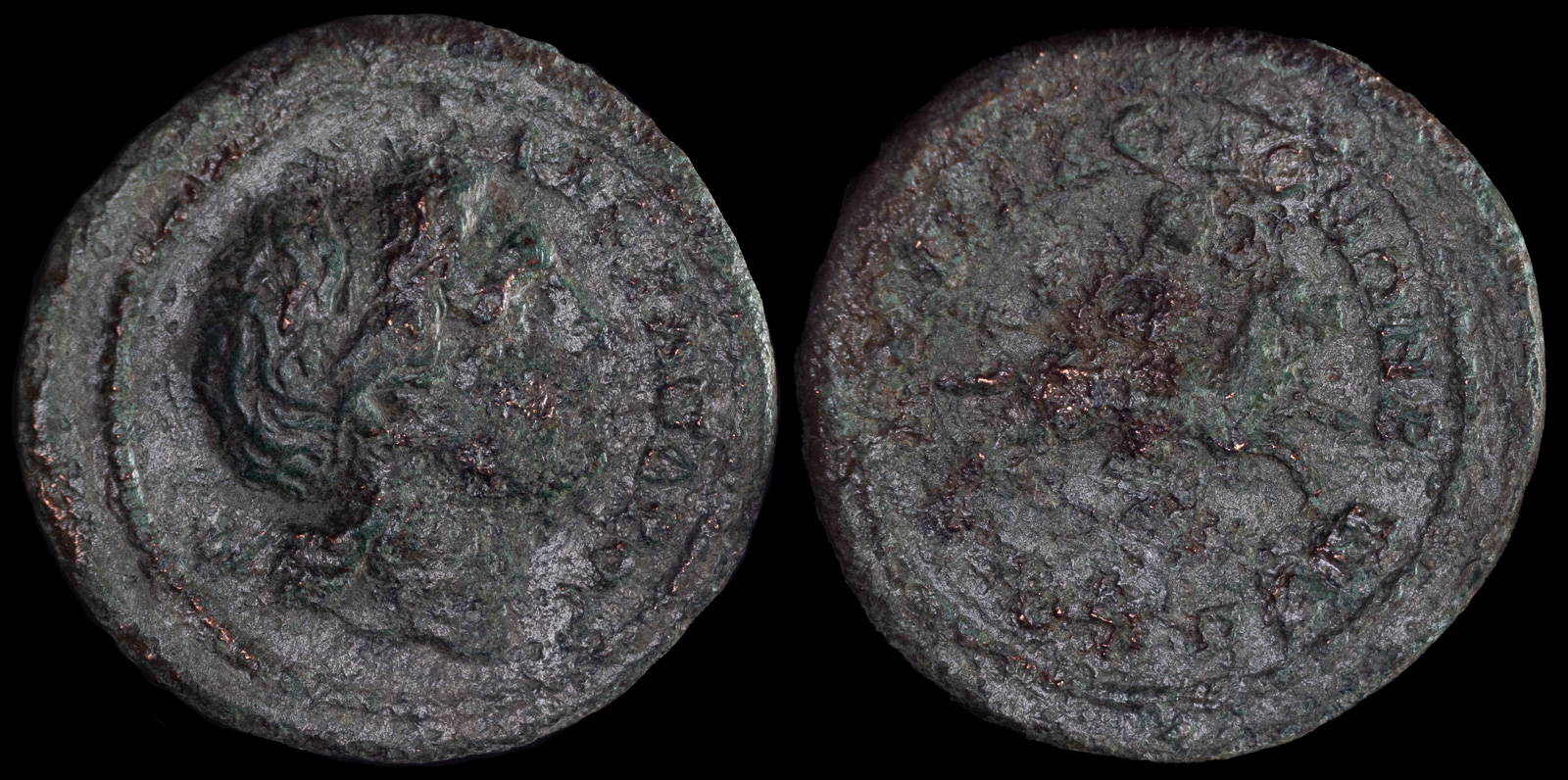
Macedon, Koinon of Macedon
Pseudo autonomous issue
Æ 27,4mm 12,90g
ΑΛΕΞΑΝΔΡΟϹ (not ΑΛΕΞΑΝΔΡΟΥ); diademed head of Alexander the Great, right, with hanging hair
R/ ΚΟΙ ΜΑΚΕΔΟΝΩΝ Β ΝΕΩΚΟ; Alexander the Great riding Bucephalus galloping right, his mantle floating behind him, holding couched spear
AMNG 499a corr. RPC VI. 276
The above is another example of a coin issued during the second neokoros. It is not dated and differs from the others by the obverse.
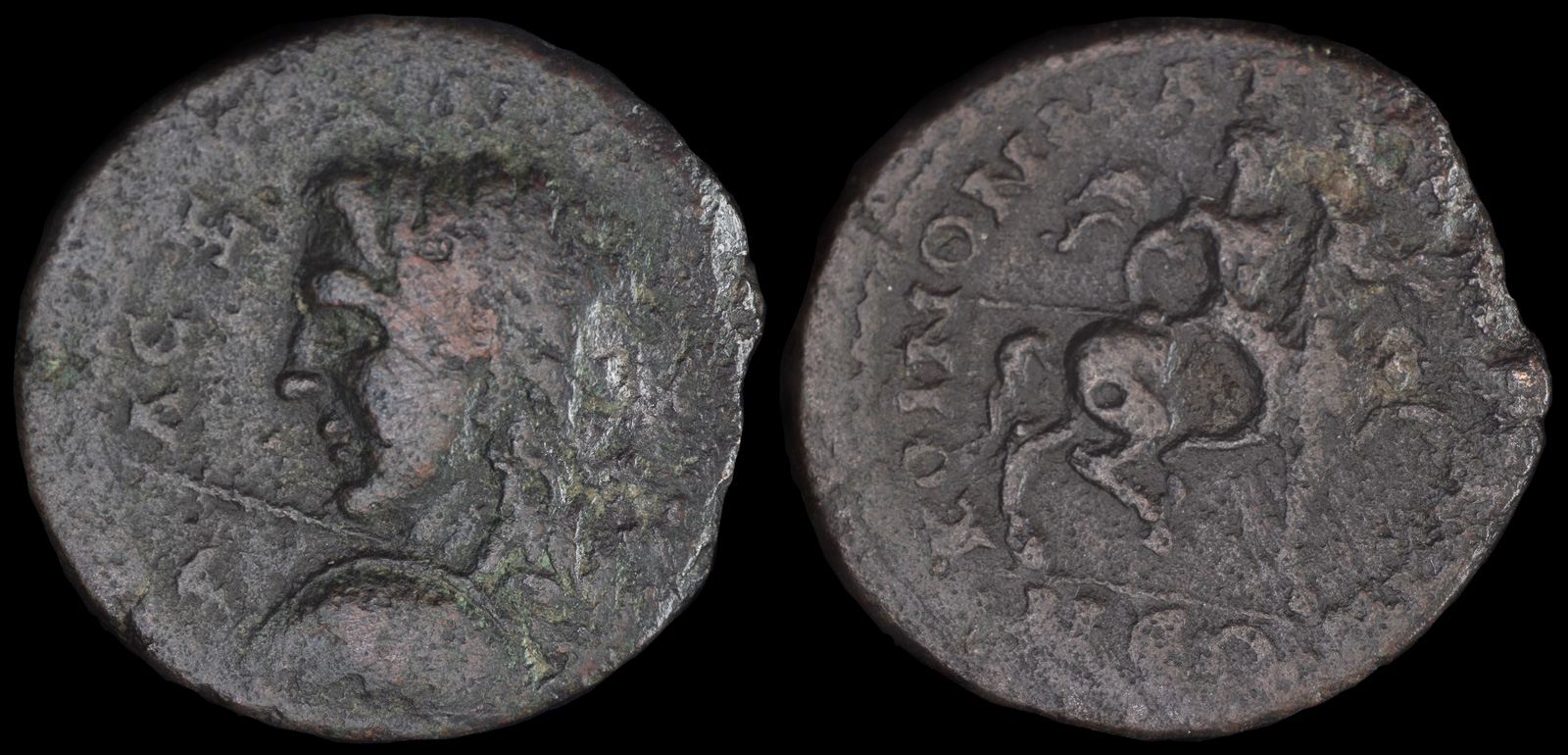
Macedon, Koinon. Pseudo-autonomous
Time of Severus Alexander (222-235 CE)
Ae 8.22g 25mm
Obv: AΛЄΞΑΝΔΡΟV. Diademed and draped bust of Alexander the Great left, holding spear and shield.
Rev: ΚΟΙΝΟΝ ΜΑΚЄΔΟΝΩΝ ΝЄΩ. Alexander the Great riding Bucephalus galloping right, with mantle floating behind him, holding couched spear.
RPC VI online 394 (2 specimens); AMNG 405
Ex Classical Numismatic 2000
This example contains a rarer version of Alexander the Great on the obverse. He faces left, which is uncommon on Koinon of Macedon issues, and one can see his spear and shield. It thus offers a far more engaging image of Alexander.
The reverse contains only ΝΕΩ without the B, indicating it was minted during the reign of Severus Alexander, when the city had only one neokoros.